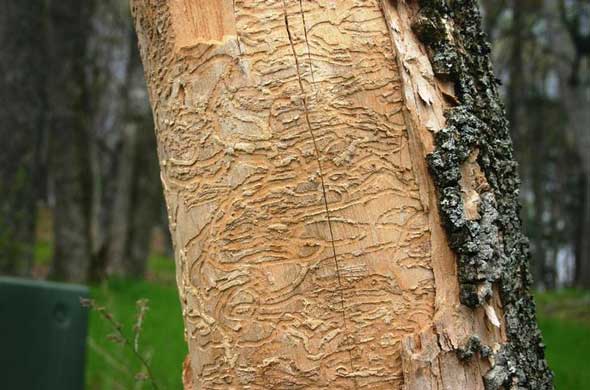 Photos courtesy of the Center for Invasive Species and Ecosystem Health (aka the Bugwood Network).
Photos courtesy of the Center for Invasive Species and Ecosystem Health (aka the Bugwood Network).
If poison won’t do it, maybe clever tree traps will. Kansas City is trying both against the Emerald Ash Borer (EAB).
The city has learned from elsewhere what to use against the bug, not that anything has stopped it.
The invasive species has killed up to 100 million ash trees since it was found in the Detroit area about a decade ago.
Now it is confirmed in Platte and Clay counties and officials believe it is south of the river.
About 2,000 trap trees are placed throughout the city, including south of the river, said Forest Decker, city manager of natural resources.
“Right now they’re acting as a kind of a beacon that will let us know if the Emerald Ash Borer appears,” he reported to the mayor Tuesday.
The bugs are flying and mating in July and August and will likely move into the trees, which have holes chopped in them for EAB access and larvae.
In November and December, he said, the bait trees will be cut and either chopped into pieces of a half inch or less to kill larvae or heated to kill them.
Meanwhile, the city is treating about 4,700 Ash trees a year for three years to stop the bugs, Decker said. Workers are also removing about 6,000 old, small or damaged ash trees, he said.
The science behind the attack on EAB is progressing, he said, “but it’s still kind of on the fly.”
Kansas City and other cities planted many ash trees, partly to replace elm trees killed by Dutch elm disease, and developers planted many more. It seemed like a good idea at the time.



Who’s talking